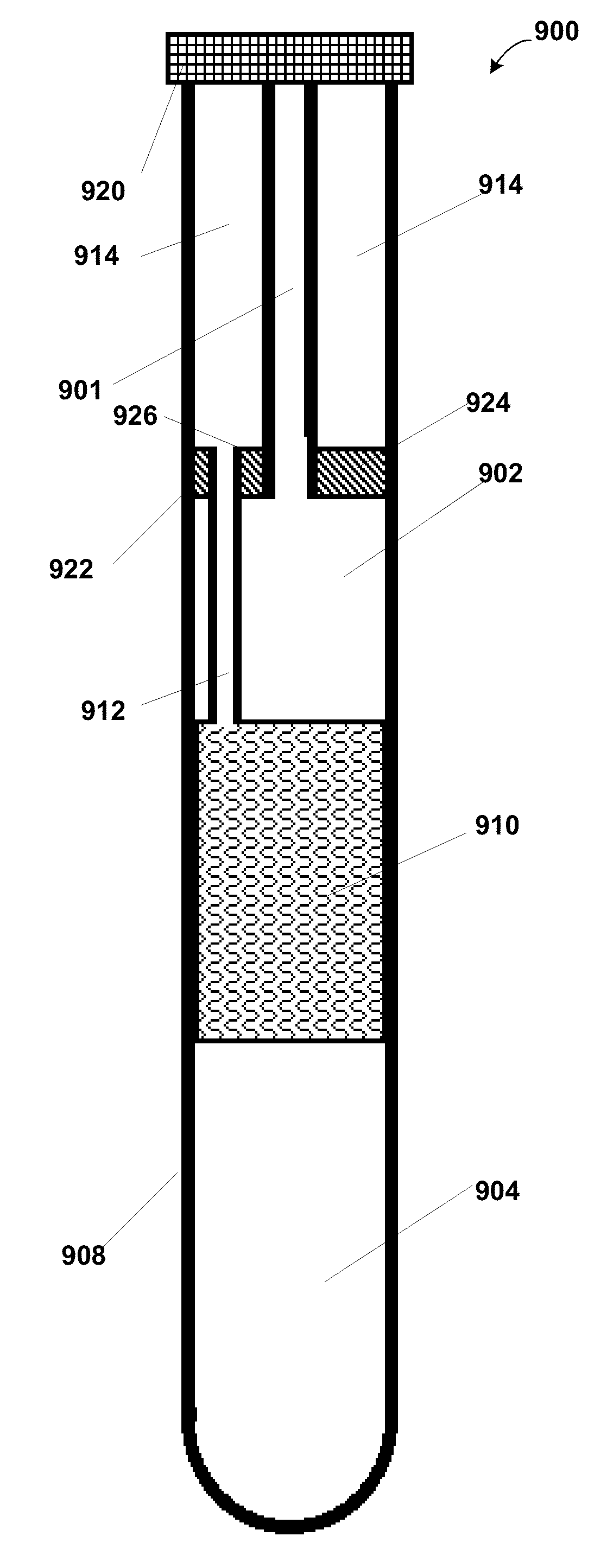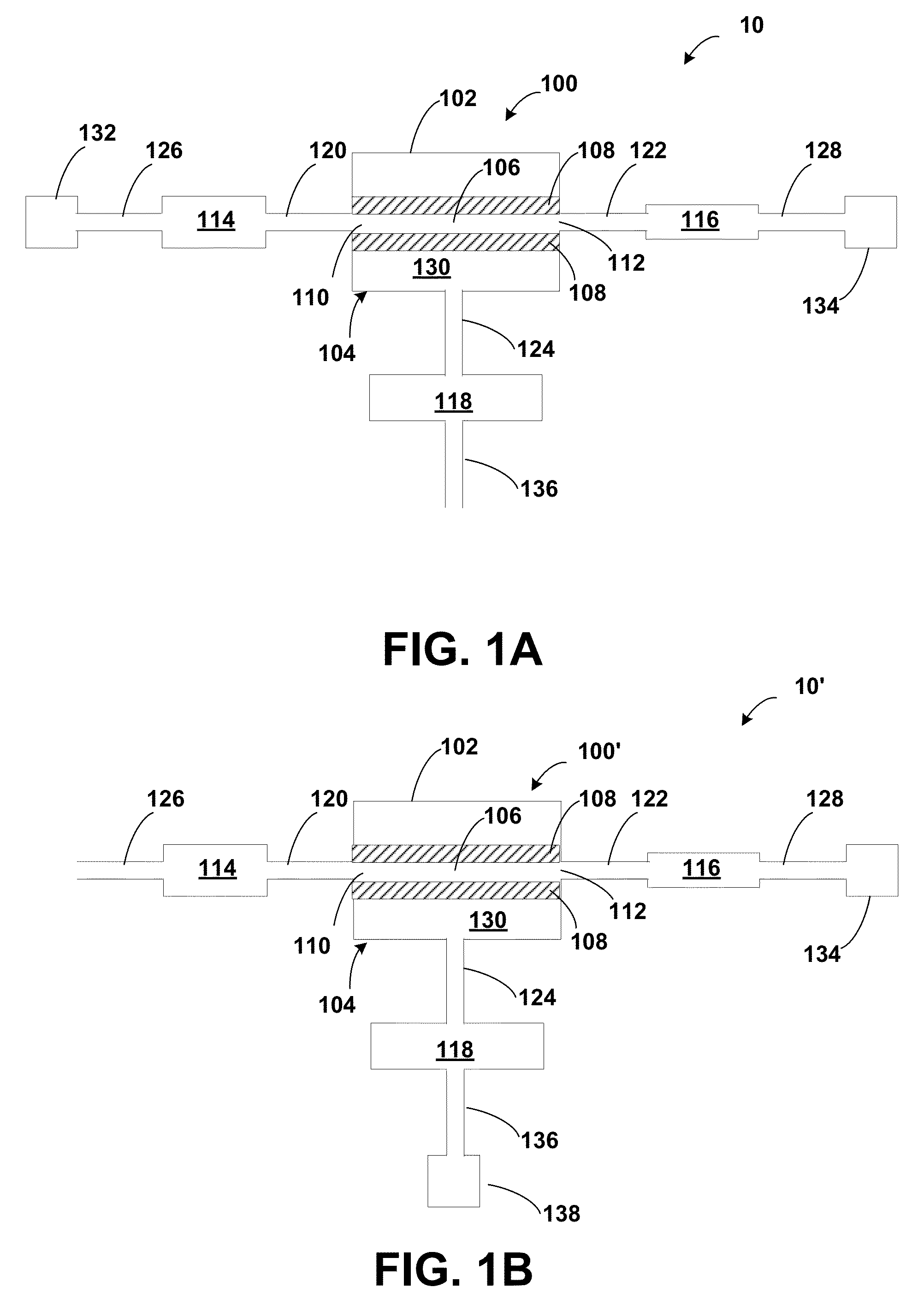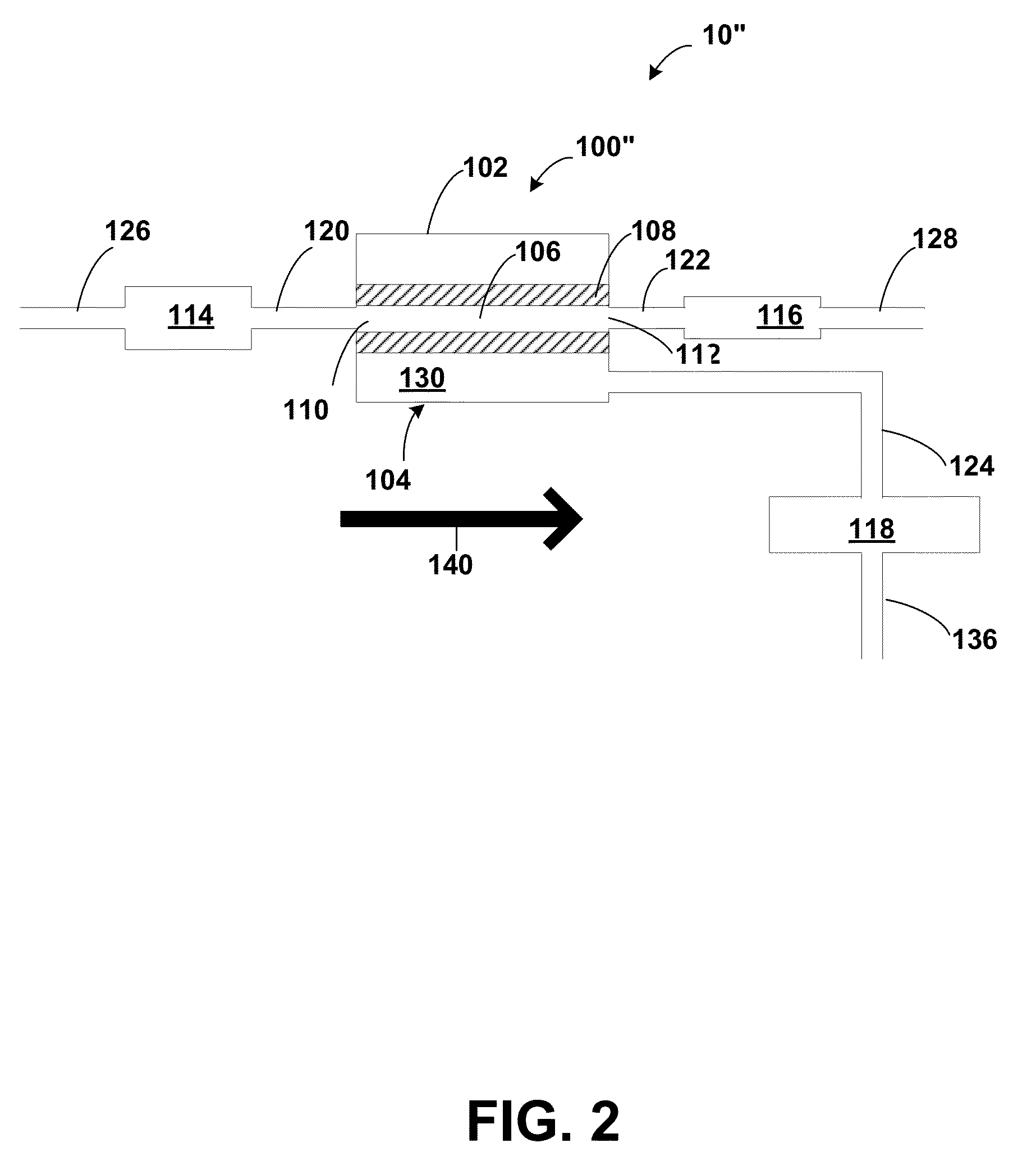Method and apparatus for the filtration of biological samples
a biological sample and filtration technology, applied in the field of sample preparation modules and methods, can solve the problems of bringing the process to a standstill, vanishingly small flux, and increased cost and large hold-up volumes, and achieve high retentate recovery or permeate recovery, low processing time, and high membrane area ratio
- Summary
- Abstract
- Description
- Claims
- Application Information
AI Technical Summary
Benefits of technology
Problems solved by technology
Method used
Image
Examples
examples 1a and 1b
[0133]The following two examples illustrate experiments in which pressure sources were used to drive the filtration using the instrumented sample preparation system similar to system 200 of FIG. 5A.
Test Solutions
[0134]A bovine serum albumin (BSA) solution was prepared at a concentration of 10 mg / ml in 0.025 M Tris-HCl Buffer adjusted to pH 7.6. All experiments were conducted at room temperature. The BSA was obtained from Sigma-Aldrich, catalog number A-3294.
[0135]SPF Modules
[0136]SPF modules 190 were made with separation elements 194 comprising hollow fiber membranes. Hollow fiber membranes were polysulfone with a 10,000 MWCO. The separation elements 194 were constructed by potting the hollow fiber membranes into a ⅛″ ID clear Tygon™ tubing with a 5-minute epoxy. Modules were made with varying lengths and varying number of polysulfone hollow fiber membranes. Separation elements had two permeate ports (the second port not shown) to allow effective flushing of the permeate compartment...
examples 2a , 2b and 2c
EXAMPLES 2A, 2B AND 2C
[0167]The following examples compare SPF UF processing with 600 μm hollow fiber (HF) Membrane to prior art centrifugal devices to demonstrate the slower performance of prior art centrifuge techniques for processing of laboratory scale samples. Examples 2A and 2B provide data on a method of processing of a 3-volume embodiment of the present invention utilizing pressure sources to drive the single-pass ultrafiltration. These examples illustrate the concentration of 10 mg / ml BSA using 10,000 MWCO hollow fibers with lumen diameter of about 600 μm and 155 cm long. In contrast, Example 2C provides data on a method of the prior art utilizing a centrifugal device, Microcon 30, manufactured by Millipore Corp., Billerica Mass., USA.
[0168]In examples 2A and 2B, the separation element used in the SPF module comprised a single hollow fiber membrane, having a membrane area of about 29 cm2. The feed stream comprised of about 5 ml of BSA solution (exact weight shown in Table 4...
examples 3 and 4
[0174]The descriptions of the methods and modules used in examples 1 and 2 apply to examples 3 and 4, except that vacuum sources were used to drive the permeation instead of positive pressure sources. The test set up was accordingly modified as described below. The procedure outlined in examples 1 and 2 was followed with minor adjustments to account for the use of vacuum sources instead of pressure sources.
[0175]Test Set-Up
[0176]A system similar to system 230 was used for examples 3 and 4 as shown in FIG. 5B. A vacuum pump 232 was used as the vacuum source coupled to the permeate port. The vacuum pump 232 was capable of generating vacuums exceeding 29 in-Hg. The feed port 126 was vented to atmospheric pressure, and therefore the TMP was about 14.7 psi. The retentate pressure, or more precisely, the TCP, was finely regulated by means of the gravity siphon 240, whereby the height of the column of water 242 essentially determines the TCP, the TCP being directly proportional to the heig...
PUM
| Property | Measurement | Unit |
|---|---|---|
| volumes | aaaaa | aaaaa |
| volume | aaaaa | aaaaa |
| volume | aaaaa | aaaaa |
Abstract
Description
Claims
Application Information
 Login to View More
Login to View More - R&D
- Intellectual Property
- Life Sciences
- Materials
- Tech Scout
- Unparalleled Data Quality
- Higher Quality Content
- 60% Fewer Hallucinations
Browse by: Latest US Patents, China's latest patents, Technical Efficacy Thesaurus, Application Domain, Technology Topic, Popular Technical Reports.
© 2025 PatSnap. All rights reserved.Legal|Privacy policy|Modern Slavery Act Transparency Statement|Sitemap|About US| Contact US: help@patsnap.com



